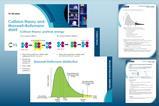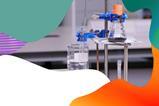Link your lessons on energy sources, water resources, nanochemistry, health and climate change to the UN’s sustainable development goals of inclusive education and equality

UN sustainable development goals 4, 5 and 10 provide an excellent opportunity to teach your students about the positive impact science has on improving the quality of life in society. For example, when teaching sexual reproduction and hormones to your 11–16 students, take the opportunity to discuss how the development of the contraceptive pill (where it is readily available) has given women a greater degree of control over their own lives.

This article is part of the Sustainability in chemistry series, developed to help you integrate the UN’s sustainable development goals into your teaching of chemistry. It supports Goal 4: ensure inclusive and equitable quality education and promote lifelong learning opportunities for all; Goal 5: achieve gender equality and empower all women and girls; and Goal 10: reduce inequality within and among countries.
It’s important for students to understand that inequalities exist in some parts of the world and that young people are deprived of a good education simply because their community lacks basic utilities such as electricity, running water and sanitation. Use this as a context for teaching electricity, renewable energy or potable water.
Climate change is the biggest threat to life on Earth and it brings inequalities to many societies around the world. Chemists and scientists have a role to play in addressing climate change as they continue to look at ways to reduce greenhouse gas emissions, lower the global carbon footprint and develop more sustainable farming, manufacturing, energy and transport. Several of these topics are included within the 14–18 chemistry curriculums.
Goal 4: ensure inclusive and equitable education
Goal 4 is about equal opportunities for learning. In parts of the world, school age children may not have access to electricity at home or at school. This makes learning difficult, especially in the dark winter months. Practical Action has developed a number of STEM challenges including the wind power challenge, where pupils learn about life without electricity before designing and making a simple wind turbine. The solar challenge is set in rural southern Zimbabwe and pupils learn how to make electrical circuits which include solar cells, as well as looking at how energy is used within the community. You can use these fully resourced Practical Action challenges in your lessons or as part of a STEM club activity.
Bill Gates, the founder of Microsoft, has challenged scientists to develop a sustainable toilet that doesn’t rely on being plumbed into a water mains or sewer and converts human waste into valuable resources. In this video he explains why sanitation is so important. Now the Nano Membrane Toilet is being tried out in Ghana. You could use this five-minute video to start a discussion around the importance of having good sanitation. And you could look at the importance of handwashing in stopping the spread of infectious disease with younger pupils using Practical Action’s activity sheets.
Goal 5: achieve gender equality
Goal 5 focuses on empowering girls and using role models is a great way to do it. I wonder how many women you can name who have played a significant role in chemistry. Compound Chem’s Women in chemistry infographics are a good place to start. For example, when introducing nanochemistry at 14–16, students could research and put together a short profile of Paula Hammond, whose research focuses on developing nanoscale polymers for drug delivery and other applications. Other topics are more suited to the 16–18 classroom.
Linking a human face to science and telling the stories of what scientists have achieved really brings home the difference that science can make. Inspire your students when teaching about health, disease and vaccinations by describing the role Dame Sarah Gilbert played in developing the Astra Zeneca Covid-19 vaccine and explaining why she now has her own Barbie doll. And she’s not the only own scientist to have their own Barbie.
Women scientists are still not widely represented. There are few among the many Wikipedia pages dedicated to scientists. Indeed physicist Donna Strickland didn’t have a Wiki page until she won the Nobel prize, but thanks to role models such as physicist Jess Wade and the WikiProject Women scientists this is beginning to change.
Highlighting the work of women scientists helps students to recognise the contribution women make to science and the world. Introduce students to the lives and work of both dead women scientists and those working today. Researching historical figures lets students appreciate how difficult these women’s lives were, working in a man’s world. Contrast this with those working today, for example from this Women in chemistry webpage, and at the same time demonstrate to students that chemists are women just like them.
Download this
Women in chemistry task, for age range 14–16
This activity highlights women in chemistry, as your learners research and create profiles on their chosen scientist using a poster or Wikipedia page template. A follow-up task asks them to create linked social media content and includes tips on writing engaging posts and blogs.
Download the teacher notes, profile templates and tips to write engaging social media posts on inspiring women in chemistry as pdf or MS Word.
Download the reciprocal reading task from the Education in Chemistry website: rsc.li/
Goal 10: reduce inequality within and among countries
Goal 10 is about reducing existing inequalities across the globe, many of which are linked to changing weather patterns and climate change. This short video from the Royal Society explains the greenhouse effect and shows how human activities over the last century are contributing to global warming and subsequently inequalities. For example, in some countries mass migration is due to loss of habitable land. Farmers are no longer able to produce the quantity or quality of crops needed to support the population. On top of this, increasingly adverse weather conditions are destroying homes and livelihoods. Scientists are continuously looking for ways to overcome these problems and reduce these inequalities.
Looking at global and local data linked to climate change provides an excellent opportunity to develop your students’ data interpretation skills while learning about climate change. The resource for Goal 11 in this series, Monitoring local pollutant levels, will support your learners to access and evaluate real-time data about atmospheric pollutants in their local area. Levels of greenhouse gases in the atmosphere have changed over hundreds of thousands of years. The Other greenhouse gases worksheet looks at data from greenhouse gases to see if they have the same effect as carbon dioxide. When studying climate data it’s important to appreciate that looking at snapshots of data over a short period of time, eg 50 or 100 years, cannot tell the complete story. In the past, this approach has been used to either support or refute a current theory.
Get more resources
- Signpost students to the L’Oréal-UNESCO for women in science international awards.
- Highlight diverse careers with our Chemistry: making the difference videos and let your learners be inspired by women helping to fix the future, such as Florence, chief technology officer and co-founder of a sustainable solutions company.
- Make your teaching more inclusive: explore the outcomes of our Chemistry for All research, or find tips on Exam prep for students with SEN.
Check out the rest of the Sustainability in chemistry series.














No comments yet